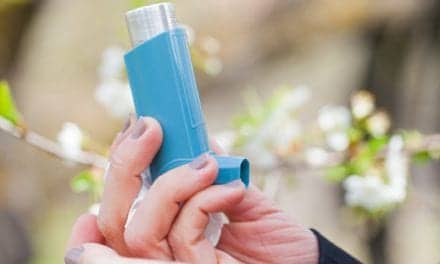Prenatal exposure to bisphenol A (BPA, a common chemical used in some plastics) appears to be inconsistently associated with diminished lung function and the development of persistent wheeze in children, according to research in JAMA Pediatrics.
Asthma rates have risen in the past three decades. Environmental factors (such as tobacco smoke and airborne pollutants) have been identified as risk factors and some research has suggested that exposure to BPA may contribute.
The authors examined whether BPA exposure was associated with lung function using forced expiratory volume in the first second of expiration (FEV1) , with wheeze and with a pattern of wheeze in children during their first five years. The study involved a group of 398 mother-infant pairings. Maternal urine samples were collected during pregnancy at 16 and 26 weeks and child urine samples were collected annually to assess gestational and child BPA exposure.
Every 10-fold increase in the average maternal urinary BPA concentration was associated with a 14.2 percent decrease in the percentage predicted FEV1 at 4 years old but no association was seen at 5 years old. Every 10-fold increase in the average maternal urinary BPA concentration was marginally associated with a 54.8 percent increase in the odds of wheezing.
While the average maternal urinary BPA concentration was not associated with the type of wheeze (phenotype), a 10-fold increase in the 16-week maternal urinary BPA concentration was associated with a 4.27-fold increase in the odds of persistent wheeze. Child urinary BPA concentrations were not associated with FEV1 or wheeze.
“We found that prenatal BPA exposure that occurred during early pregnancy was inconsistently associated with diminished lung function, increased odds of wheeze and a persistent wheeze phenotype in young children. … If future studies confirm that prenatal BPA exposure may be a risk factor for impaired respiratory heath, it may offer another avenue to prevent the development of asthma,” the authors wrote.









